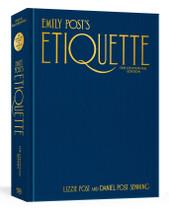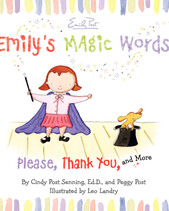
Addressing & Sending Wedding Invitations
Opening a wedding invitation is unlike opening any other piece of mail. Much care goes into addressing both the inner and outer envelopes. Several enclosures usually accompany the invitation itself, and there is a thoughtful order to how they are placed inside the outer envelope, and even a few things to think about when you stamp and mail them.
Before You Begin
- Allow plenty of time to address, assemble, and mail all invitations.
- Order extra envelopes—inner and outer—in case of errors.
- Consider the reply address you will wish to use. Guest responses and gifts are likely to be sent to the return address on the outer envelope. If guests should reply to a different address, use it for the reply card envelope or list it below the RSVP line on the invitation.
- Organize the master guest list in a useful form, such as on file cards, in a computer database, or on a spreadsheet.
- Extra tip: When response cards are used, lightly mark the back of each card with an identifying number (keep track on your master guest list) in case guests neglect to write in their names when RSVPing.
- Make sure your addressing and/or assembly area is clean (be careful with beverages!) and wash your hands before you begin.
How to Address the Envelopes
- Double check the spelling of your guests’ names before addressing the envelopes.
- Invitations are always addressed to both members of a married couple.
How to Address the Inner Envelope of a Wedding Invitation
The inner envelope bears the title and last names of the specific people invited. This allows the host to be very clear about who is invited, and by omission, who is not invited.
If children are invited but are not receiving a separate invitation, their names may be written on a line below their parents’ names on the inner envelope. If no inner envelope is used, children’s names are written on the outer envelope below the names of their parents.
For example, the inner envelope for Mr. and Mrs. James Darling and the two Darling children, Sarah and Jonathan, would be written:
Mr. and Mrs. Darling
Sarah Darling
Jonathan Darling
It’s also fine to write familiar names for close family: Aunt Martha and Uncle Bill.
How to Address the Outer Envelope of a Wedding Invitation
The outer envelope is addressed conventionally using titles, first, (middle), and last names.
- An invitation to an unmarried couple residing at the same address is addressed with both names connected by “and.” Use one or two lines, depending on length.
- No abbreviations or middle initials are used when addressing formal invitations.
While titles are abbreviated (Mr., Mrs., Ms., Dr.) all other words such as “Street,” or “Boulevard” are spelled out. State names may be written in full or use the two-letter postal code abbreviation. Middle initials aren’t used, so either write out the middle name or omit it. Generally, an invitation to parents and children is addressed to the parents:
Mr. and Mrs. James Arthur Darling
Forms of Address
Following is list of the most common forms of address. Please see our Guide to Addressing Correspondence for a complete list.
To a married couple
Invitations are always addressed to both members of a married couple, even though the bride may know only one or knows that only one will attend.
To an unmarried couple living together
Invitations to an established couple who are unmarried but live at the same address are addressed to “Ms. Nancy Fellows and Mr. Scott Dunn,” on one line.
To a married woman doctor or two married doctors
If the woman uses her husband’s name socially, the address is “Dr. Barbara and Mr. James Werner.” If she uses her maiden name both professionally and socially, it is “Dr. Barbara Hanson and Mr. James Werner.” If the husband is also a doctor, the address is either “The Drs. Werner” or “Drs. Barbara and Robert Werner.”
How to add “and Guest”
Since it’s awkward and impersonal to address the outer envelope as “Mr. James Smith and Guest,” the two envelope system works well. Address the outer envelope to “Mr. James Smith” and the inner envelope to “Mr. James Smith and Guest.” If you’re only using one envelope, include a short note with your invitation: “Dear James, You’re welcome to bring a guest to the wedding. Please let me know. Best, Laura.” If there’s time and James supplies the information, you can send his guest an invitation, too.
How to Stuff the Envelopes
- When two envelopes (inner and outer) are used, insert the invitation (folded edge first for a folded invitation, left edge for a single card invitation), so that you see the printed side of the invitation when the envelope flap is opened.
- When there are enclosures—reply card and envelope, map, printed directions, etc.—they are placed on top of the printed side of the invitation, with their printed sides up, in size order with the smallest on top. Again, when the flap is opened, the printed side should be visible. If the invitation is folded, insertions are stacked in size order—smallest on top—but within the fold. Tissues are optional. If used, they are placed on top of the invitation and below any enclosures. If the invitation is folded, they are inserted into the fold.
- The inner envelope is then placed unsealed in the outer envelope, so when the outer envelope flap is lifted, the name(s) of the guest(s) is visible.
- Before sealing the outer envelope, double- and triple-check that the names on the inner and outer envelopes match up.
Etiquette for Mailing Wedding Invitations
Before you buy stamps, take an assembled invitation to the post office and have it weighed. It’s likely that the inserts, or even an unusually shaped envelope, will call for extra postage. The post office usually has wedding-themed stamps that will cover the cost of most invitations with enclosures. Some post offices may be out of stock, however, so leave time to find them at another branch or to order them online.
Remember that maps and other inserts sent to out-of-town guests will make those invitations heavier than ones sent to local guests and may require a postage adjustment. In that case, be sure to assemble two sets and have both weighed.
Lastly, ask at your post office if it is possible to have your envelopes hand-stamped. This produces a different postmark (often considered more attractive) than if your invitations were run through an automatic sorter.










